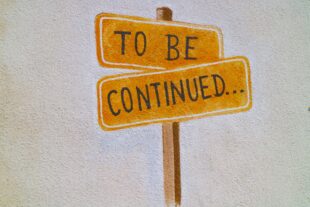The Story We Have Written In Our Head: Overcoming a Negative Sense of Self
Marty Robinette
It may not come as a surprise that human beings are storytellers. For millennia, families, tribes, and societies have told stories to each other to preserve histories and to make meaning for their lives. It must be deeply ingrained in us because we create our own stories about ourselves. Those stories add up to develop our sense of self.
How The Story Is Created
These stories are created by the interpretations of our experiences and how we feel we fit into those events. One’s sense of self includes self-awareness, identity, self-esteem, and self-concept. As you can see, the ideas in one’s head about themselves are quite impactful. The key to that sense of self is the relative accuracy of the story they have written in their heads.
 The nineties was a decade that discovered enormous information about the brain. Information that we still use today as we seek to explain mental activity. One of the key findings was that humans are constantly seeking to make connections from one thing to another and formulate patterns that they see. This is how they make sense of their surroundings and their world.
The nineties was a decade that discovered enormous information about the brain. Information that we still use today as we seek to explain mental activity. One of the key findings was that humans are constantly seeking to make connections from one thing to another and formulate patterns that they see. This is how they make sense of their surroundings and their world.
Children are doing this, but may not be able to articulate those patterns. Children are spontaneously formulating and organizing these patterns into schemas. Schema is defined as a “mental framework or organized structure that helps us understand and interpret information and situations.”
When a child has a cat or a dog, they notice that they both have four legs. They get thrown into a “four-legged animal” schema, but that begins to get more sophisticated when they begin to notice other things that make them unique. House cats come in lots of different colors, mostly about the same size, and mostly look the same.
Whereas dogs come in many sizes, with different looking faces, different hair, and often different temperaments. They will soon create a new category for cats and dogs separately. On a side note, when my son was somewhere between 1-2 years old, we had a small dog and we drove by some horses and he said “ look daddy, big doggies.” A perfect illustration of developing patterns and schemas in a child.
So, what does this have to do with developing a sense of self? The fact that this is done by the internal workings of a child to begin with and continues to develop throughout their lives into adulthood demonstrates how vital getting the story right can be.
Those experiences, along with our internal dialogue, begin to help us draw some conclusions about who we are. Are we worthy of some praise? Do we never measure up? Are we good at this and not at that? Do the people around me care for me or not? Which begs the question, what if that person/child gets it wrong?
How We Get a Sense of Self Wrong
Most parents desperately want to provide an environment in which their child is given all the tools to get it right. Such things as a safe environment, healthy food, clothing, shelter, emotional security, healthy play, and just about everything are used to build a positive self-image. The truth is, no matter how hard a parent tries to get everything right, they can influence them, but they cannot control what’s really going on in their child’s thinking.
Every child’s experience they have, from nursing or feeding, to any sickness, noise exposure, the first attempts to crawl, running in the yard, etc., is being logged into a system that they created without much assistance. Amazingly, they often get it right, and if not, they learn otherwise and have to revise some of their schemas.
 One of the unique aspects of human growth is that we process the information we receive through our senses and make judgments about it or reflect on its significance. Every child does this, and while they may be deeply influenced by their parents and other family members, they make the conclusions themselves.
One of the unique aspects of human growth is that we process the information we receive through our senses and make judgments about it or reflect on its significance. Every child does this, and while they may be deeply influenced by their parents and other family members, they make the conclusions themselves.
And they can, at times, arrive at a faulty conclusion. Some of these conclusions lead them to believe that they are of no value, unworthy of love and acceptance, and feel they have little to offer others. The question is, how did they come to such conclusions?
It’s not difficult to imagine a child or young person as they develop into an adult, concluding that they have little value if they have been treated abusively for much of their formative years.
When their significant adults don’t pay appropriate attention to them, send messages of disappointment by yelling or unfairly punishing them, they will conclude that something is wrong with them, that even their parents or other key people don’t think they are worthy of their love and attention.
This plants the thoughts of self-doubt or self-loathing in their hearts and will stick for a long time. The developing person will be viewing the world through a prism or colored glasses that skew the actual world. And if they do conclude that they are less than, then everything that happens to them will be shaped by those thoughts of negativity, seemingly confirming those ideas.
The young individual will work to fight against this assessment by seeking to attain certain achievements and receive positive and genuine accolades from others, but they will find it hard to believe. They will be stuck in their original self-assessment and will try ever harder to prove that inner story wrong, but will struggle to have an impact.
They may also go in another direction and give up, and go all in on the negative self and go down a self-destructive path in life. The result of this negative self-view is often depression, anxiety, or perfectionism.
There’s a phenomenon called “confirmation bias.” Confirmation bias (according to Britannica) “is people’s tendency to process information by looking for, or interpreting information that is consistent with their existing beliefs.”
This is on full display in recent times in adults who gravitate toward news sources that fit their views, for example. We all do it. But when a young person who is seeking to understand themselves begins to zero in on an identity, the “story in their heads” is going to have a strong impact.
How can that negative story about us be amended?
For adult clients I have worked with who struggle with a negative sense of self, I often point out the imbalance they have in their view. It is way too heavily weighted toward the negative, and some level of balance needs to take place to live a better and more truthful self. In reality, this balance can be assisted by understanding and believing some fundamental truths of Scripture.
 One of the first things we learn in church is “Jesus loves me this I know, for the Bible tells me so.” The fact that Jesus, God, loves us personally and in all the possible ways to attempt to articulate the magnitude of His love, can and should be of great comfort.
One of the first things we learn in church is “Jesus loves me this I know, for the Bible tells me so.” The fact that Jesus, God, loves us personally and in all the possible ways to attempt to articulate the magnitude of His love, can and should be of great comfort.
For someone who feels they are unworthy of love and acceptance, this truth can hopefully break through and give them awareness of this blessing. Unfortunately for many, they know it to be true; they believe it in their heads, but to fully embrace God’s love is still an obstacle.
The book of Romans has some of the clearest declarations of the benefits of the cross and our saving faith. The apostle Paul, in the first seven chapters, demonstrates in a convicting way that we have all sinned, whether a gentile or Jew, we fall far short of the glory of God when left to ourselves.
But by chapter 8, he says, “Therefore, there is now, no condemnation for those who are in Christ Jesus…” When we completely give up the notion of impressing God and instead put our faith in Jesus’ death and resurrection, we can rest in His loving and accepting arms. Our sins are forgiven. He has promised to take those failings and toss them as far as the east is from the west. That’s pretty far.
When an individual has told themselves the following, it can only lead to depression.
- I have fallen greatly short of expectations
- People will not accept me
- Trying something new is surely going to fail
- Even the closest people to me won’t care for me
- Trying to meet new friends will only result in the same rejection
The story that seems to be supported by years of evidence is skewed. After all, it tends to reject any evidence to the contrary, such as that they do have good qualities, that they are capable, that they indeed are lovable (because key people really do love them). This is the imbalance that is difficult to combat when this is a strong conviction of the one suffering from this deep-seated self-doubt.
The path out of this depressing conclusion to one’s life is a difficult road, but worth the work. Depression is often associated with anxiety because failure seems just around the corner. The beginning of that path out is beginning to truly believe the truths of Scripture, that God loves and accepts you just as you are.
 As a creation of His, you are what He has made you to be, and He doesn’t make mistakes. Rest in this fact. Then be humble enough to consider that the story you have told yourself, that is weighted so negatively, could be off base. Be open to hearing some uncomfortable words of praise, love, and acceptance. Then let that story become amended to one more aligned with how things really are.
As a creation of His, you are what He has made you to be, and He doesn’t make mistakes. Rest in this fact. Then be humble enough to consider that the story you have told yourself, that is weighted so negatively, could be off base. Be open to hearing some uncomfortable words of praise, love, and acceptance. Then let that story become amended to one more aligned with how things really are.
One way that I have tried to help a client balance the scales of their self-negativity is to think like a lawyer and develop a case for themselves; a case that is strong enough to present to court; A case that has a mound of evidence that shows clearly that they have many great qualities that have been ignored or pushed down.
When I ask them to share some of their case, they have a longer list than they expected, and with the help of others, that case can grow further. They begin to see a glimpse of what it can feel like to amend that sense of self to a more balanced and truthful evaluation. These are the things that God helped create in you, and they should be celebrated. You are indeed wonderfully made.
If this situation fits you or someone you know, please feel free to contact me through the website of Spokane Christian Counseling. Or call me at 509-569-7102.
“Working From Home”, Courtesy of Christin Hume, Unsplash.com, CC0 License; “Your Story”, Courtesy of Jon Tyson, Unsplash.com, CC0 License; “Fountain Pen”, Courtesy of Art Lasovsky, Unsplash.com, CC0 License; “To Be Continued”, Courtesy of Reuben Juarez, Unsplash.com, CC0 License







